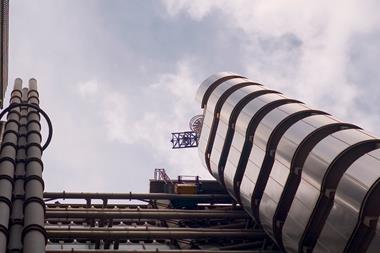While material damage will cover the repairs, how can a business pay its ongoing costs and expenses when a catastrophe stops it trading? Steve Dutton reports on business interruption insurance
Business Interruption (BI) insurance may be considered a complicated topic best left to the specialists. However, brokers arranging cover for commercial clients need to fully understand what BI cover offers so they can correctly advise their client as to why they may need it and the extent of cover they will require.
First, consider how a company could benefit from BI insurance. If, for example, a furniture factory suffers a loss through fire or water damage, its material damage insurance will meet the cost of repairing the building, replacing the equipment and replenishing lost or damaged stock.
However, if the retailer cannot trade due to the effects of the incident, it will not have income from which to pay rent, business loans, insurance premiums, salaries or other expenses that need to be paid regularly, regardless of the level of income the company generates.
Also, the loss of future orders and customers, who may be forced to go elsewhere to buy their furniture and may not return, could continue to affect the income of the business long after the repairs to the premises have been completed and the company is again trading normally.
These issues can result in a healthy company going bankrupt within a short period of time, a position that can be resolved by the purchase of BI cover.
BI cover deals with “consequential” losses by paying the business’s ongoing costs and expenses and funding the extra costs it incurs, in order to get up and running again as quickly as possible.
These extra costs could include provisional repairs, hiring or buying temporary equipment and renting alternative premises.
This insurance also makes up the difference between the profits the business was expecting to earn during the period in which it was prevented from trading at full capacity, and those that it actually earns.
BI cover is normally arranged as a section within the commercial package or combined policy and is linked very closely to the cover provided by the material damage or asset protection section.
It is usual to ask for the name of the business and named subsidiaries, a trade or business description, and the premises to be insured. The policy may be extended to cover other premises should an interruption impact on the insured’s activities.
So how can these risks be covered?
As businesses operate in different ways, different types of cover have been developed to suit individual needs. These are:
• Gross profit: suitable for businesses that manufacture or sell goods, and hold stock in those goods. This is the most common type of cover
• Gross rental basis: suitable for businesses that own property from which they receive income that would be lost should the property became temporarily unusable as the result of an insured peril
• Gross revenue basis: suitable for businesses that generally provide a service, but also hold some stock which is sold to customers – for example, a leisure complex
• Gross fees basis: suitable for businesses that are mainly reliant on providing services for a fee and which hold almost no physical stock – for example, a dental surgery
• Increased cost of working basis: suitable for small businesses, such as consultants, which can operate from almost anywhere with a desk, phone and plug for a laptop and where loss is generally limited to the cost of hiring the work space.
Gross profit cover
As gross profit is the most common type of cover, we will concentrate on it.
First, we need to define gross profit and understand how is it calculated.
Gross profit is the amount by which the sum of the turnover and the amounts of closing stock and work in progress shall exceed the sum of the amounts of the opening stock and work in progress and the amount of uninsured working expenses.
The italicised terms above are defined as:
Turnover: value of total sales and other income during a fixed period, exclusive of VAT.
Closing stock: value of stock held at the end of a given period.
Work in progress: the lower figure of either the cost of the expenditure to date needed to get the product to its present state and location, or the value for which the stock in its current state and location could be sold.
Opening stock: value of stock held at the beginning of a given period.
Uninsured working expenses (also known as purchases): normally variable costs that should ‘fall off’ in proportion to the loss of turnover.
If a manufacturer cannot make its goods it will not need to order the raw materials, so these cost would disappear until production restarts and would not be part of the cover. This applies to goods, discounts to customers, commission payments to sales agents and delivery charges.
As an example, consider our furniture warehouse. Let’s assume it has an annual turnover of £500,000. At the beginning of the accounting year it had stock costing £20,000 in the showroom and £40,000 of stock in the warehouse.
Over the course of the year it spends £200,000 on purchasing new stock. At the end of the year it has £30,000 of stock in the showroom and £40,000 of stock in the warehouse. The gross profit would be:
£570,000 - £260,000 = £310,000
The gross profit can be broken down further into insured working expenses and net profit, both of which are protected by a BI policy.
Insured working expenses are those that do not diminish in relation to the reduction in turnover, such as salaries and wages, insurance premiums, rent, rates and bank interest.
Net profit is the difference between gross profit and the insured working expenses.
The sum to be insured by BI is based on the gross profit. However, this figure needs to be considered over three periods of time:
• The previous financial period – assume that cover is being taken out immediately after the end of a firm’s accounting year, on 1 July 2007. The gross profit figure tells us what the insured would have lost if the business had not traded during the previous year
• The period of insurance – as the insurance period is to run for the coming year, this figure needs to be adjusted to reflect any anticipated increases or decreases in profitability or insured working expenses likely to occur over the policy term. Remember that a loss could occur on day 364 of cover, in which case the profits that are affected would be those in the following year
• The period of recovery or maximum indemnity period – this is the maximum period of time during which an indemnity can be provided and is usually expressed in multiples of six or 12 months (with a minimum of 12 months as the normal starting point). The sum insured must reflect the term chosen.
The insured must consider how long the business could be out of action or have its activities curtailed after a loss. The gross profit figure needs to be increased in line with this.
When setting the maximum indemnity period the business must decide how long it will take to:
• Repair or reinstate the buildings and any specialised machinery
• Replace stock or raw materials
• Recover its customer base and lost market share and thus its expected income level had the loss not occurred.
So if our example factory sets its sum insured based on an indemnity period of
12 months it would need to consider, at the
1 July 2007 renewal date, the amount of gross profit it wanted to insure for the period ending on the 30 June 2009 – two years after the 2007 renewal date.
This can be extremely difficult to calculate and the consequences of getting it wrong can be considerable, in that any under-insurance will be penalised by the application of the policy condition of average.
Insurers , however, have introduced a method to overcome this: insurance on a “declaration linked basis” rather than the more traditional “sum insured basis”. The chart below outlines the differences between the two covers and shows how they operate.
Steve Dutton is business development manager at the Broker Academy
Hosted by comedian and actor Tom Allen, 34 Gold, 23 Silver and 22 Bronze awards were handed out across an amazing 34 categories recognising brilliance and innovation right across the breadth of UK general insurance.












































